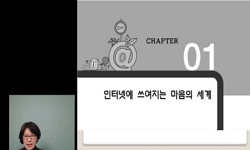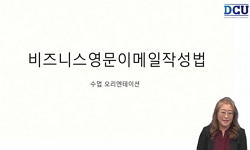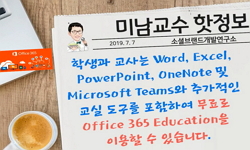This paper addresses the research question, "Who is more likely to use email: high-level or low-level employees?" In discussing the question, this study reviews important literature on CMC, particularly focusing on methodological issues, and suggests ...
http://chineseinput.net/에서 pinyin(병음)방식으로 중국어를 변환할 수 있습니다.
변환된 중국어를 복사하여 사용하시면 됩니다.
- 中文 을 입력하시려면 zhongwen을 입력하시고 space를누르시면됩니다.
- 北京 을 입력하시려면 beijing을 입력하시고 space를 누르시면 됩니다.
부가정보
다국어 초록 (Multilingual Abstract)
This paper addresses the research question, "Who is more likely to use email: high-level or low-level employees?" In discussing the question, this study reviews important literature on CMC, particularly focusing on methodological issues, and suggests two important implications. First, the findings of researchers such as Rice, Hughes, & Love (1989), Rice & Torobin (1992), and Markus (1994a; 1994b) are inconsistent with what information richness theory suggests (e.g., Daft & Lengel, 1986; Daft, Lengel, & Trevino, 1987). This contradiction might be explained by a methodological difference between the two groups of researchers – e.g., the "observational and experimental" method in Markus (1994a; 1994b) and the "projective" method used by Daft et al., 1987). Second, as the use of email becomes widespread, researchers’ interests have moved from testing whether or not managers are more likely to use email than lower level workers to identifying motivational differences between higher-level and lower-level employees in choosing the medium. This study concludes with some suggestions for overcoming the methodological limitations revealed in the previous researches.
참고문헌 (Reference)
1 Rice, R. E., "Usage and Outcomes of Electronic Messaging at an R & D Organization: Situational Constraints, Job Level, and Media Awareness" 5 : 141-161, 1989
2 Allen, T. J, "The Influence of Communication Technologies on Organizational Structure: A Conceptual Model for Future Research" 14 : 575-587, 1987
3 Hiltz, S. R., "Replacing Bales Problem Solving Experiments on a Computer Conference: A Pilot Study" Research Number Eight 1978
4 Walther, J. B., "Relational Aspects of Computer-mediated Communication: Experimental Observations over Time" 6 (6): 186-203, 1995
5 Sproull, L., "Reducing Social Context Cues: Electronic Mail in Organizational Communication" 32 : 1492-1512, 1986
6 Daft, R. L., "Organizational Information Requirements, Media Richness and Structural Design" 32 : 554-571, 1986
7 Daft, R. L., "Organization Theory and Design" South-Western College Publishing 1998
8 Walther, J. B., "Misattribution and Attributional Redirection in Distributed Virtual Groups" 2002
9 Daft, R. L., "Message Equivocality, Media Selection, and Manager Performance: Implications for Information Systems" 11 : 355-368, 1987
10 Russ, R. S., "Media Selection and Managerial Characteristics in Organizational Communications" 4 : 151-175, 1990
1 Rice, R. E., "Usage and Outcomes of Electronic Messaging at an R & D Organization: Situational Constraints, Job Level, and Media Awareness" 5 : 141-161, 1989
2 Allen, T. J, "The Influence of Communication Technologies on Organizational Structure: A Conceptual Model for Future Research" 14 : 575-587, 1987
3 Hiltz, S. R., "Replacing Bales Problem Solving Experiments on a Computer Conference: A Pilot Study" Research Number Eight 1978
4 Walther, J. B., "Relational Aspects of Computer-mediated Communication: Experimental Observations over Time" 6 (6): 186-203, 1995
5 Sproull, L., "Reducing Social Context Cues: Electronic Mail in Organizational Communication" 32 : 1492-1512, 1986
6 Daft, R. L., "Organizational Information Requirements, Media Richness and Structural Design" 32 : 554-571, 1986
7 Daft, R. L., "Organization Theory and Design" South-Western College Publishing 1998
8 Walther, J. B., "Misattribution and Attributional Redirection in Distributed Virtual Groups" 2002
9 Daft, R. L., "Message Equivocality, Media Selection, and Manager Performance: Implications for Information Systems" 11 : 355-368, 1987
10 Russ, R. S., "Media Selection and Managerial Characteristics in Organizational Communications" 4 : 151-175, 1990
11 Rice, R. E., "Media Appropriateness: Using Social Presence Theory to Compare Traditional and New Organizational Media" 19 : 451-484, 1993
12 Culnan, M. J., "Handbook of Organizational Communication: An Interdisciplinary Perspective" Sage 420-443, 1987
13 Walther, J. B., "Handbook of Interpersonal Communication" 529-563, 2002
14 Hollingshead, A. B., "Group task performance and communication technology: A longitudinal Study of Computer-Mediated versus Face-to-Face Work Groups" 24 : 307-333, 1993
15 Markus, M. L., "Finding a Happy Medium: Explaining the Negative Effects of Electronic Communication on Social Life at Work" 12 : 119-149, 1994
16 Weisband, S., "Evaluating Self and Others in Electronic and Face-to-Face Groups" 84 : 632-639, 1999
17 Rice, R. E., "Electronic Message Systems in the University: A Description of Use and Utility" 33 : 131-152, 1983
18 Markus, M. L., "Electronic Mail as the Medium of Managerial Choice" 5 : 502-527, 1994
19 Sproull, L., "Do You Know Who You’re Talking to? In Connections Ch. 3" MIT Press 37-56, 1991
20 Walther, J. B., "Distributed Work: New Research on Working across Distance Using Technology" MIT Press 2002
21 Kling, R., "Cooperation, Coordination and Control in Computer-Supported Work" 34 : 83-88, 1991
22 Steinfield, C. W., "Computer-Mediated Communication in an Organizational Setting:Explaining Task-Related and Socioemotional Uses" 9 : 777-804, 1986
23 Rice, R. E., "Computer-Mediated Communication and Organizational Innovation" 37 : 67-94, 1987
24 Robey, D., "Computer Information Systems and Organization Structure" 24 : 679-687, 1981
25 Rice, R. E., "Communicator Style, Media Use, Organizational Level, and Use and Evaluation of Electronic Messaging" 6 : 3-33, 1992
26 Fulk, J., "Cognitive Elements in the Social Construction of Technology" 8 : 259-288, 1995
27 Carlson, J. R., "Channel Expansion Theory and the Experiential Nature of Media Richness Perceptions" 42 : 153-170, 1999
28 Carlson, P. J., "An Investigation of Media Selection among Directors and Managers: From “Self” to “Other” Orientation" 335-358, 1998
29 Rice, R. E, "Access to, Usage of, and Outcomes from an Electronic Messaging System" 6 : 255-276, 1988
30 El-Shinnawy, M, "Acceptance of Communication Media in Organizations:Richness or Features?" 41 : 242-253, 1998
동일학술지(권/호) 다른 논문
-
한국사회에서 정부신뢰가 위험인식에 미치는영향에 대한 실증 연구: <한국종합사회조사(KGSS) 2013>를 바탕으로
- 한국거버넌스학회
- 강윤재
- 2016
- KCI등재
-
- 한국거버넌스학회
- 안병철
- 2016
- KCI등재
-
해항도시(海港都市)의 해양산업 실태와 지속가능한 발전방안: 부산의 해양일자리 창출을 중심으로
- 한국거버넌스학회
- 우양호
- 2016
- KCI등재
-
압축적 개발을 통한 도시재생에 대한 논쟁적 접근: 도시생활환경과 사회적 공평을 중심으로
- 한국거버넌스학회
- 서준교
- 2016
- KCI등재
분석정보
인용정보 인용지수 설명보기
학술지 이력
| 연월일 | 이력구분 | 이력상세 | 등재구분 |
|---|---|---|---|
| 2028 | 평가예정 | 재인증평가 신청대상 (재인증) | |
| 2022-01-01 | 평가 | 등재학술지 유지 (재인증) |  |
| 2019-01-01 | 평가 | 등재학술지 유지 (계속평가) |  |
| 2016-01-01 | 평가 | 등재학술지 선정 (계속평가) |  |
| 2015-12-01 | 평가 | 등재후보로 하락 (기타) |  |
| 2011-01-01 | 평가 | 등재학술지 유지 (등재유지) |  |
| 2008-01-01 | 평가 | 등재학술지 선정 (등재후보2차) |  |
| 2007-01-01 | 평가 | 등재후보 1차 PASS (등재후보1차) |  |
| 2005-01-01 | 평가 | 등재후보학술지 선정 (신규평가) |  |
학술지 인용정보
| 기준연도 | WOS-KCI 통합IF(2년) | KCIF(2년) | KCIF(3년) |
|---|---|---|---|
| 2016 | 0.85 | 0.85 | 0.98 |
| KCIF(4년) | KCIF(5년) | 중심성지수(3년) | 즉시성지수 |
| 1.01 | 1.01 | 1.111 | 0 |





 KCI
KCI






